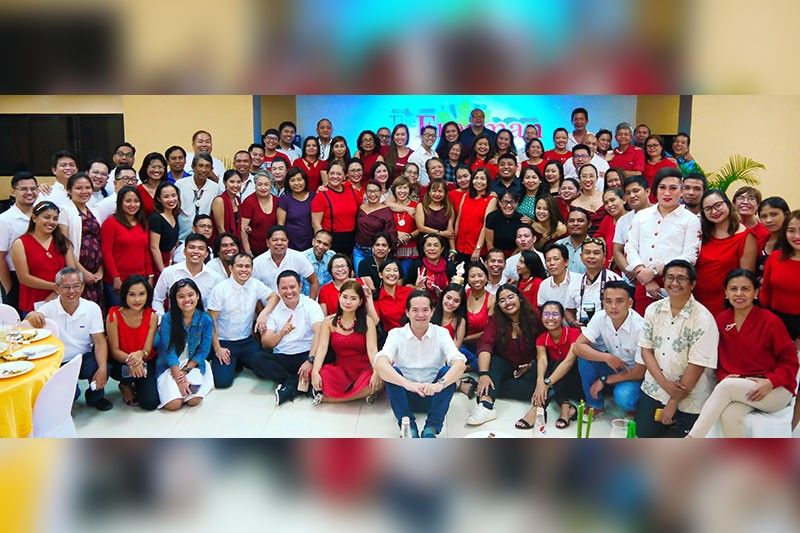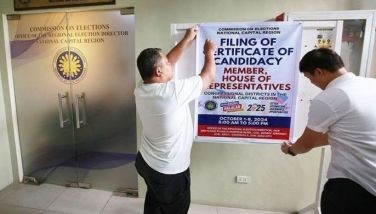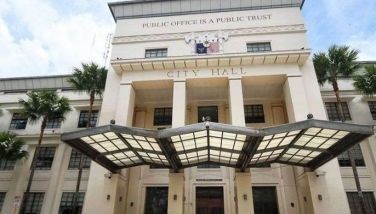The FREEMAN: A century of fair and fearless journalism

CEBU, Philippines — The year was 1919. The month was May.
A paper was born with a vision of providing an alternative source of news at a time when journalism in Cebu shifted from fledgling to flourishing. It was called “The FREEMAN,” the brainchild of an illustrious lawyer named Don Paulino Arandia Gullas.
After it first hit the streets of Cebu City, Cebuanos quickly knew that The FREEMAN was built on the foundation of principled journalism.
“In the hands of unscrupulous and unprincipled journalists, the press is the ugliest weapon of destruction, forged in the furnace of Satan,” Don Paulino wrote in the maiden editorial. “But committed to the hands of men who are true to the ethnics of their profession, it is the greatest empire builder, the greatest educator, the greatest molder of public opinion -- the best preserver of law and order, and the most faithful handmaid of private and public morals.”
Perhaps it was this guiding light that helped steer the paper through intense competition during its infancy.
Several newspapers were already in existence at the time, according to Dionisio Sy, The FREEMAN’s columnist on historical tidbits. There were “El Nuevo Dia” of Don Sergio Osmeña; “La Justicia” and “El Nacional,” both short-lived newspapers of Don Vicente Sotto; “El Precursor” of Mariano Jesus Cuenco; “La Revolution” of Felimon Sotto; and “Nueva Fuerza” of Vicente Rama.
But while these newspapers and tabloids lasted for only a few months or years, The FREEMAN turned more pages through time, thanks to Paulino’s leadership.
Always a visionary, Paulino never gave up The FREEMAN even has he realized that Cebu was already crowded with newspapers.
When he entered politics as representative in the Seventh Philippine Legislature under the control of the United States of America, he tapped his friends to manage the paper -- among them Julian Bulaon, Saturnino Villoria, and Glen Russel -- and help him with different sections such as English, Visayan, and business.
Two of the pioneer employees of the newspaper were Gervacio “Basyon” Lavilles as reporter and Emilio Alcuizar as proofreader. They and a few other workers reported to the office at P. Lopez corner Colon Streets, and later at Juan Luna corner Colon Streets.
According to Sy, The FREEMAN’s maiden issue consisted of 16 pages, 12 in English and four in Visayan, similar in size to today’s local newspapers. But the next six issues, although still consisting of 16 pages, divided its pages equally into the English and Visayan sections.
Over the years, the number of pages varied from 18 to 20 to 22 to 24 to 28 to 40 to 32. The earlier years gave The FREEMAN an option to give proportion between the English and Visayan sections in its total pages.
From “The FREEMAN,” the paper’s name was slightly altered into “Ang Freeman” in 1931 as the management decided to have all pages in Visayan, except the Spanish and English advertisements.
The name was then changed again to “The FREEMAN.”
About that same year, Paulino, a bar topnotcher, was asked to be among those who would draft what would become the 1935 Philippine Constitution.
The FREEMAN eventually ceased publication in 1934, and this continued until World War II.
Paulino was believed to have been executed by the Japanese Imperial Army since he was never seen again after a group of Japanese men picked him during the war.
Fast forward to 1965, Jose “Dodong” Gullas, Paulino’s nephew, breathed new life back to The FREEMAN.
Just 31 years old at the time, Dodong sought the advice of his father, Vicente, and asked permission from Paulino’s widow, Hilda, to revive the paper.
Dodong, now the chairman, asked two important people to run the paper -- Balt Quinain and Juanito Jabat.
During its revival stage, The FREEMAN was reintroduced as a weekly magazine. Four years later, in 1969, it became a daily English newspaper.
From there, the paper blazed trails and never looked back.
On Aug. 23, 1994, The FREEMAN family grew with the birth of its sister publication, Banat News, after Jabat came up with the idea of publishing a purely Cebuano language newspaper.
When the second millennium came, after over 40 years of running the paper, Dodong realized that his passion for journalism alone could not sustain the business.
Those four decades were marked by some of the paper’s darkest times that could have easily led to its second closure. There was the Martial Law regime. There was a time when the newspaper’s staff went on an exodus to a competing paper. And there was the Asian crisis of the ‘90s that took a toll on the paper’s revenues.
But no closure came. In those trying times, The FREEMAN kept the faith.
Dodong decided to look for a partner that would share the same vision and mission with him to ensure that the publication would not only survive but also maintain its independent, fear, and fearless journalism.
Call it providential that Philippine Star President and CEO Miguel Belmonte was also looking for a local newspaper partner in Cebu.
On August 21, 2004, in a move that further strengthened the paper, The FREEMAN partnered with Belmonte family’s Star Group of Publications, publisher of The Philippine Star, Pilipino Star Ngayon, and PM or Pang-Masa.
Awards
Over the years, The FREEMAN has raked in many accolades from different award-giving bodies in testament to the paper’s dedication to excellent reporting.
In 1996, the paper was hailed as the best local daily in the Philippines Press Institute Press Awards. In 1997, PPI also awarded The FREEMAN as best in environmental reporting, best in science and technology reporting, and best in newspaper design.
In 1998, the paper won best in environmental reporting.
A year later, the Philippine Press Institute, the largest association of newspapers in the Philippines, put The FREEMAN to the Hall of Fame for being the Philippine Community Newspaper of all time.
In 2000, PPI also awarded The Freeman as best edited newspaper, best editorial page, best in photojournalism, best newspaper design, and best in historical-cultural reporting.
In 2009, it received recognition in photojournalism.
The Rotary Club of Manila awarded The FREEMAN as best regional paper in 2014. Then in 2015, 2017, and 2018.
In 2015, PPI again recognized the paper as best in fisheries reporting and best in environmental reporting. It won best in editorial page the following year.
The Cebu Archdiocesan Mass Media Awards also awarded The Freeman’s excellent threshing of various issues in its editorials in 2017. It was also recognized as the environmental publisher of the year and environmental story of the year in 2018 by the Department of Environment and Natural Resources.
Unforgettable articles
Chronicling Cebu for the past 100 years, The FREEMAN can verily claim prestige and history as the longest-running regional newspaper in the Philippines.
True to its advertisement, The FREEMAN knows Cebu better. Over the last 100 years, many ground-breaking events have happened that only The FREEMAN has covered and written about.
During the Martial Law period in 70s and 80s, The FREEMAN was the only paper in the country that dared to publish stories and accounts of the dictatorship.
Dodong and Jabat, together with other fearless employees, were successful in leading the paper out of reach of the claws of the martial regime.
The FREEMAN was also the only local newspaper that printed the assassination of Senator Benigno “Ninoy” Aquino Jr., husband of former president Corazon Aquino, who was killed at the tarmac of what is now the Ninoy Aquino International Airport from his exile abroad.
Challenges hurdled
But like any other newspaper in the world, The FREEMAN faced and continues to face unprecedented challenges in the light of technological advancements that have pushed many players into folding their pages.
Given such challenges, it becomes even rarer to celebrate the existence of a newspaper company for 100 years now.
While some newspapers had to close and shift to digital format, The FREEMAN decided to streamline its operation to remain competitive in the long term, even as it admits the struggle to survive.
Keeping up with the times, The FREEMAN has managed to offer both the traditional and the new media through its physical issues and its own social media networks on Facebook, Instagram, and Twitter.
All news and feature stories of the paper can also be accessed through its website, www.philstar.com/freeman, allowing Cebuanos and non-Cebuanos alike around the world to read its contents.
Digital pundits have predicted the death of the industry, but as this piece is written, newspapers continue to enjoy bulk of the stream of revenues from print and online advertising.
Because as digital news providers fight the demon in fake news, many people still resort to their trusted source of information all these years: the newspaper.
And in Cebu, it’s The FREEMAN.
Over the last 100 years. And, hopefully, the next. (FREEMAN)
- Latest























